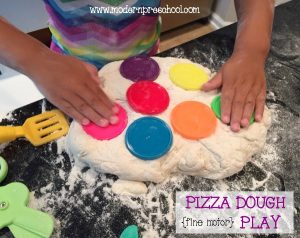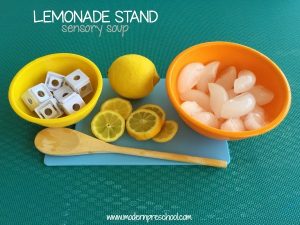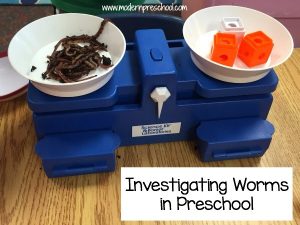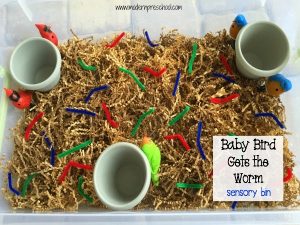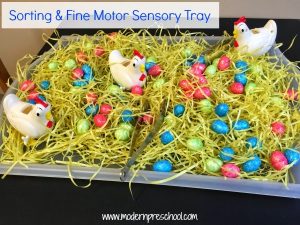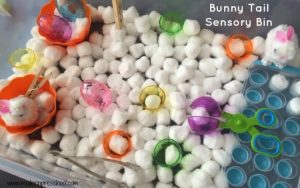Let’s make some pizza! Kids in the kitchen! My kids love to help out in the kitchen, whether it’s mixing with a hand-mixer or rolling out dough. Recently, my preschooler was wondering if she could play with dough like she did the last time we were making cookies. We didn’t have cookie dough, but we did have pizza dough! She spent an hour creating her
LEMONADE STAND (water sensory play}
Lemonade for sale! My own preschooler has been obsessed with sensory soups lately! Whenever we are outside, we are filling our favorite plastic bin or water table with something colorful and fun to explore with. {dollar store and Target Dollar Aisle finds are always a hit!} When I asked her if she wanted to make pretend lemonade, she was all in! We decided together what
Investigating WORMS in Preschool
Wiggly worms! Earthworms are fascinating to preschoolers. FAS-CIN-ATING. Whether the little learners are brave enough to actually touch the worms, or would rather observe from the sidelines, worms are a great tool to use to teach across all learning areas in the classroom. My class has been feeding worms to baby birds in our newest sensory bin, learning about how worms help the soil, and
Baby Bird Eats the Worm! {fine motor sensory bin}
Wiggly worms! Mother birds feed their babies wiggly worms while they stay safe in their nest. Those wiggly worms can be hard to hang on to! This sensory bin is a big bird nest full of wiggly worms and baby birds waiting to be fed. Strengthen fine motor muscles, work on color sorting, and have fun playing all at the same time! Just like our
Chicken Eggs Sorting & Fine Motor Sensory Tray
I put together this sensory tray full of chicken eggs and Easter basket grass with the help of my preschoolers. Before we could even start setting up the tray though, the grass (which we were calling hay) needed a haircut! When you take the grass out of the bag, it seems like one long piece all wrapped up and is almost impossible to really separate.
Bunny {tail} Sensory Bin for Preschool
Sensory play with cotton balls! If there is one area of the classroom that my preschoolers visit the most, it would be our sensory table activities! Because of this, I like to change the theme and materials in our sensory bins often. Spring and Easter are just around the corner, so this is the perfect time of year to introduce my preschoolers to our Bunny
